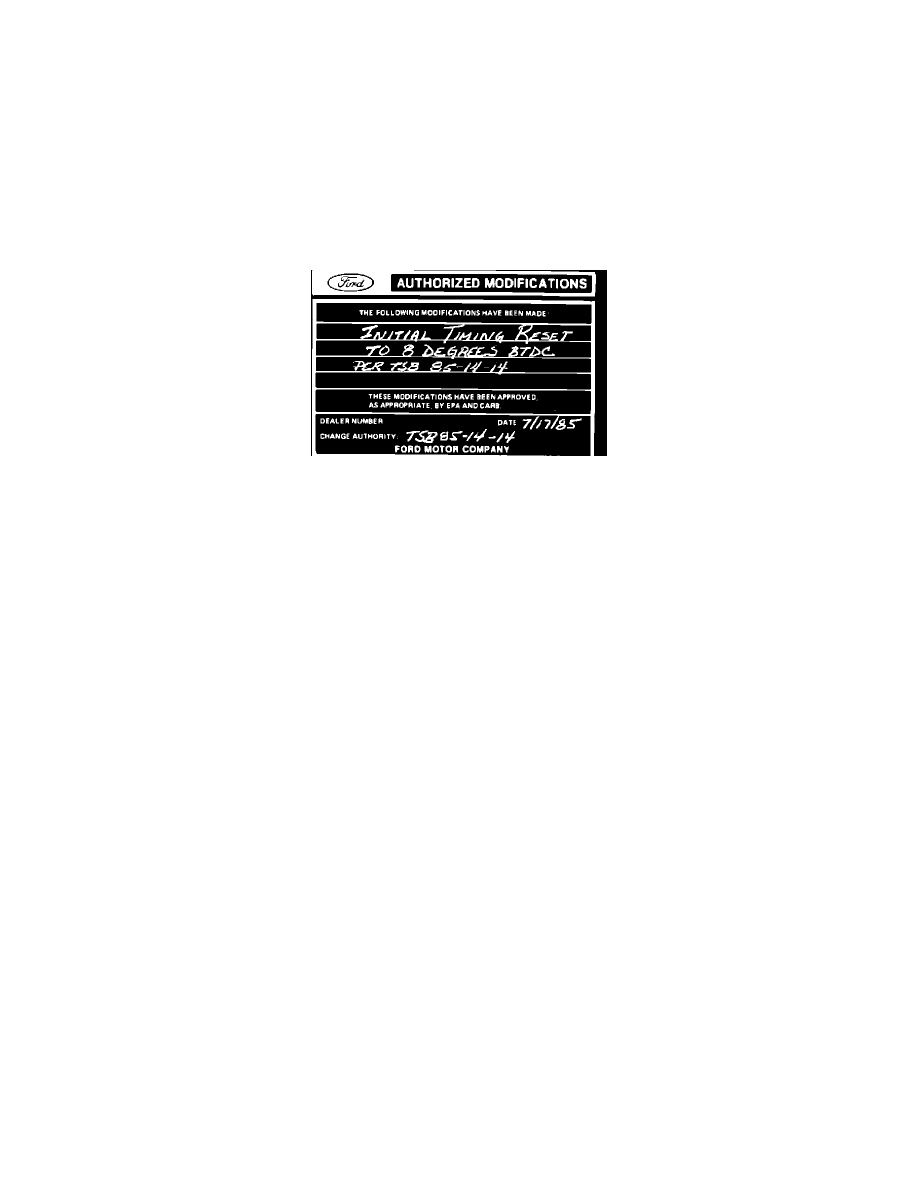Tempo L4-140 2.3L CFI (1985)

^
Engine speed may roll up and down from 500 RPM to 1600 RPM slowly and/or intermittently.
SURGING
^
Surges at highway speeds light loads.
^
Decel bucking/trailer hitching. 1* Strategy requires engagement within 20 seconds after start (reference TSB 85-14-13).
Vehicle System Checks:
1.
Check that all electrical and vacuum connections of the engine control system are properly attached utilizing visual inspection and wiggle test.
(Pay particular attention to ACT, MAP and TFI connections).
2.
Check base engine timing and reset to 10 degrees BTDC as required. If pings/knocks are present set to 8 degrees.
NOTE:
If timing is adjusted then an Authorized Modifications sticker should be installed noting changes.
Authorized Modification decal
Obtain an Authorized Modification decal and list the date, dealer number and summary of alterations performed. Select a prominent place adjacent to the
Vehicle Emission Control Information decal suitable for installing the Authorized Modifications decal. Clean the area, install the decal and cover it with
a clear plastic decal shield.
3.
Check for proper fuel pump/check valve operation. (See Procedure 1, page 35). Check for injector/regulator integrity. (See Procedure 2 on page
37). Check integrity of fuel pressure regulator, fuel filter and fuel return line. (See Procedure 3 on page 38).
4.
Check the throttle stop screw and adjust to 590 RPM (ATX) 640 RPM (MTX) maximum. Check TV Linkage Rod adjustment per TSB 85-9-29.
(Revise 550 RPM stated in TSB to 590 RPM).
5.
After performing Steps 1 through 4, retest the vehicle. If customer concern(s) is still present, replace the fuel injector. (See Procedure 4 on page
38). If new injector corrects concern(s), return vehicle to customer; otherwise, reinstall original injector.
6.
Review the articles listed in the following "TSB Application Chart" to assure that other causes for the symptom(s) were not overlooked.
NOTE:
Processor replacement or battery terminal disconnect requires adaptive learning procedure per TSB 85-9-17.
TSB APPLICATION CHART
SYMPTOM
TSB NO.
Fuel Injector/Fuel Pressure Regulator
85-9-12
Leaking
Hard/No Start
85-9-13
Idle Speed - Adaptive Learning
85-9-17
Strategy
Loading/Stalling - ACT Harness
85-9-20
-
Intermittent Open Circuit
No Start, Idle Rough, Spark Knock
85-9-22
Stalls - Engagement/Decel after
85-9-26
Initial Cold Start
85-9-27
Surge/Stall, Poor Idle, Loss of Power,
85-9-28
AM Radio Noise, Alternator Regulator
